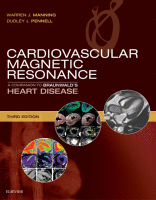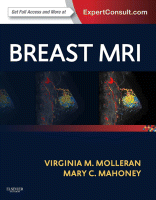Physical Address
304 North Cardinal St.
Dorchester Center, MA 02124

Although currently not approved by the US Food and Drug Administration (FDA) for cardiac imaging, the vast majority of cardiovascular magnetic resonance (CMR) studies use a gadolinium-based contrast agent. The CMR contrast agent typically makes diseased tissue appear brighter (or…

Many disease processes alter the local molecular environment of the myocardium, and consequently the longitudinal (T1) and transverse (T2) relaxation times can change. While such changes may be observed directly as changes in image contrast, the tissue processes may be…

Introduction This introduction to the basic principles of cardiovascular magnetic resonance (CMR) describes the concepts of magnetization, T1, T2, T2*, and image formation, and describes some common CMR pulse sequences and parameters. These basic ideas will require some time and…

When a suspicious finding is seen on a breast magnetic resonance imaging (MRI) examination and other imaging and clinical examinations are negative, the only way to perform a biopsy of the lesion is by using MRI guidance. All facilities that…

More than 2 million women in the United States have undergone breast implantation since the 1960s, either for cosmetic augmentation or breast reconstruction. During this time, both the silicone controversy and the known complications of breast augmentation have necessitated an…

The breast undergoes significant anatomic and histologic changes after intervention. Posttreatment imaging findings have been thoroughly described for mammography and breast ultrasound, but only isolated descriptions of postsurgical breast changes seen on dynamic contrast enhanced (DCE) breast magnetic resonance imaging…

In the absence of distant metastatic disease, breast cancer staging is based on the extent of local-regional disease in the breast and axilla. The American Joint Committee on Cancer TNM system is used to provide breast cancer patients and their…

Some benign pathologic entities of the breast, when diagnosed at image-guided core needle biopsies, have the potential to be upgraded to invasive carcinoma or ductal carcinoma in situ (DCIS) upon complete excision by surgery. These entities are collectively categorized as…

The current practice of breast imaging calls for using breast magnetic resonance imaging (MRI) only on high-risk patients with appropriate indications to maximize cancer detection yield and minimize the false-positive rate. Even with careful selection of patients, radiologists usually encounter…

Breast magnetic resonance imaging (MRI) has become an important part of the work-up of patients with newly diagnosed breast cancers. Although no large studies have proved a survival advantage, and questions remain as to whether preoperative MRI has reduced re-excision…